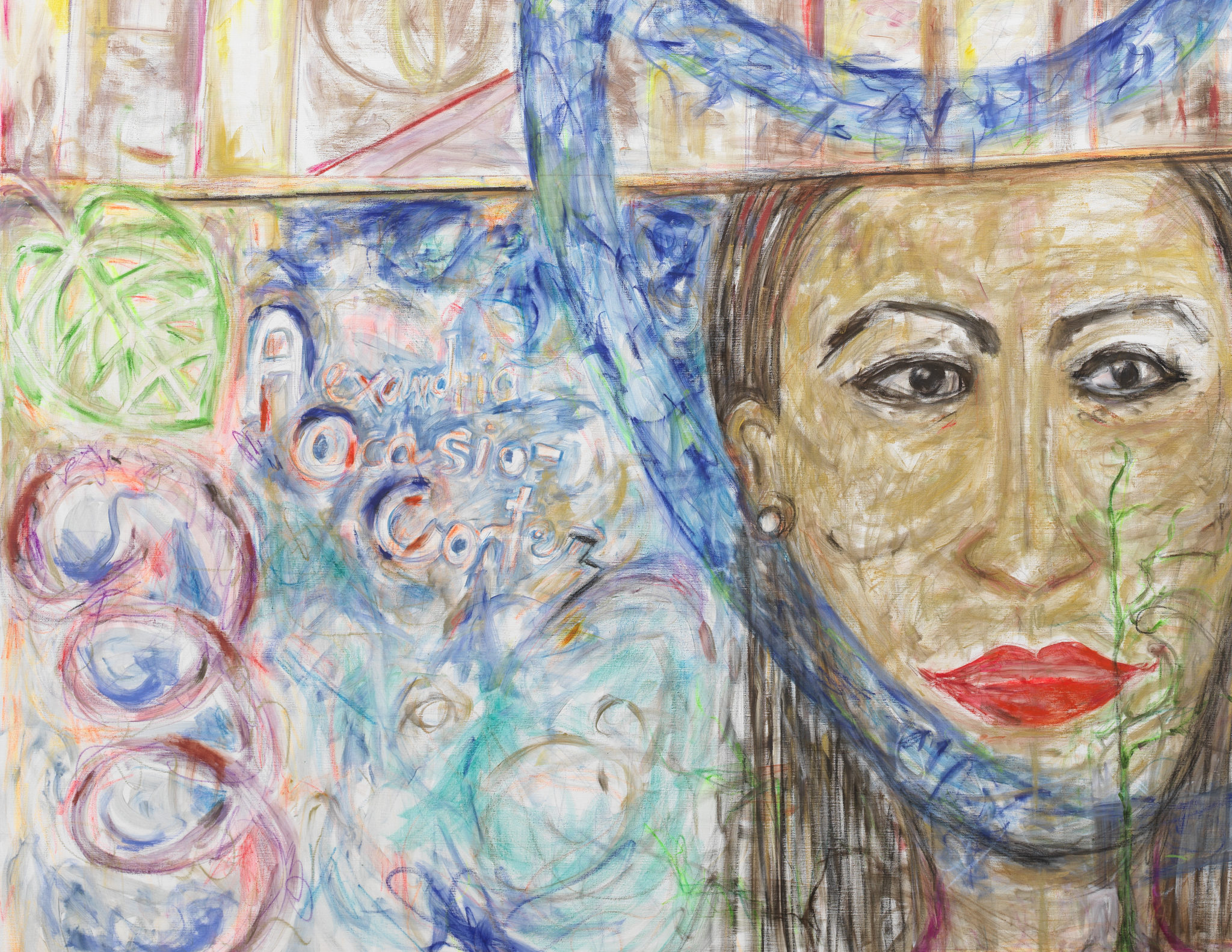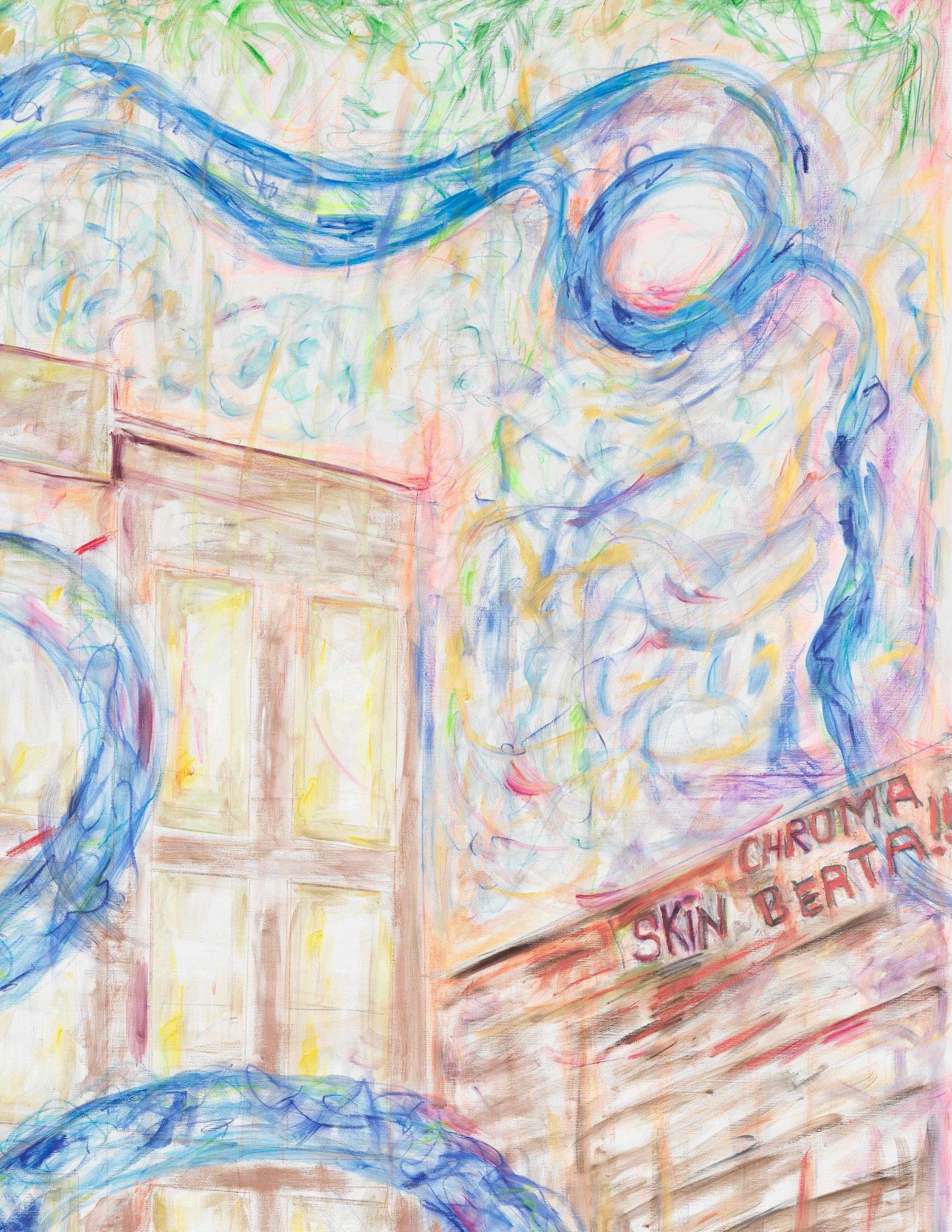Jutta Koether
Neue Frau, 2019
Oil on canvas
133 7/8 x 82 11/16 inches (340 x 210 cm)
© Jutta Koether
I never looked at painting as some masterful thing one would want to reinstall, but instead as a platform, a potential, an island, a lifeboat, a discipline to negotiate life…a performance.
—Jutta Koether
Departing from the question of what it means to paint, and to continue painting, Jutta Koether adopts a fluid authorial position. Mining the discourses of appropriation and post-punk that shaped the cultural landscape in and around the city of Cologne in the 1980s, as well as those that she encountered following her move to New York in 1991, she makes them her own, constructing an eclectic artistic genealogy that runs from early-modern perspective painting through Symbolism, Post-Impressionism, and Surrealism. These allusions, she layers with a recurring repertoire of motifs, including pixelated grids and vibrant red paint. The meaning of these tropes is insistent but elusive, at once historically layered and negotiated anew by each viewer who encounters Koether’s canvases. Exploring both the medium’s past and its unfolding present, Koether foregrounds affect, asynchrony, and dissonance, clearing a new and distinctly contemporary space for painting.
Recently exhibited in the solo show titled Libertine at Museum Abteiberg in Mönchengladbach, Germany, this painting conveys Jutta Koether’s vision of the Neue Frau, in other words, the “new woman”: a concept with a rich legacy among avant-garde artists, who sought to unite art and life, revolutionizing both in the process. Its composition is based on a street mural of trailblazing politician Alexandria Ocasio-Cortez—a model for its titular figure—which Koether sourced from a photograph in a German newspaper. Set on Manhattan’s Lower East Side, the scene features found graffiti—“Skin Chroma Beata!”—and a looping garland. A frequent presence in Koether’s recent paintings, the garland functions as a cipher: a form, manifest in a myriad of cultural artifacts, from Roman wall paintings to Flemish Baroque still lifes, that lacks a fixed meaning. Floating in space, it thematizes suspension, its significance constantly shifting as it moves among contexts—an allegory, perhaps, for Koether’s practice. In Neue Frau, the garland, rendered in a range of modulated blues, is echoed by a smaller, spiraling ribbon within the space of the mural. This doubling, together with the painting’s photographic source, raises questions of representation, alerting the viewer to the ways in which reality is never objective or neutral but always constructed and mediated. Prismatic and complex, the scene bespeaks renewal: a sense captured by the delicate yet resilient plant that sprouts from concrete before Ocasio-Cortez’s likeness. Embracing pendent meanings—and the anxiety that such semantic irresolution may provoke—Neue Frau looks forward to unforeseen possibilities.



